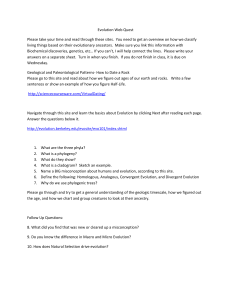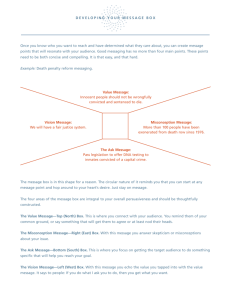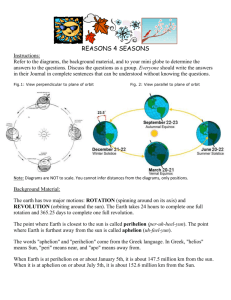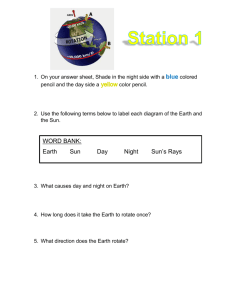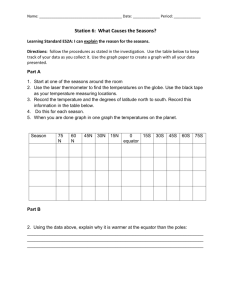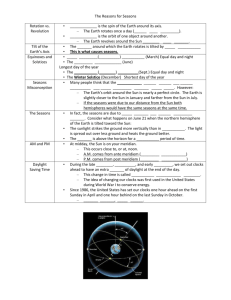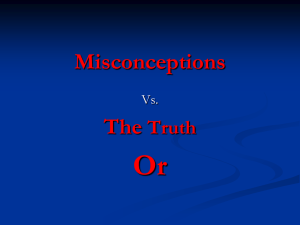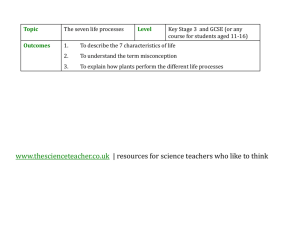Bad Astronomy Presentation
advertisement
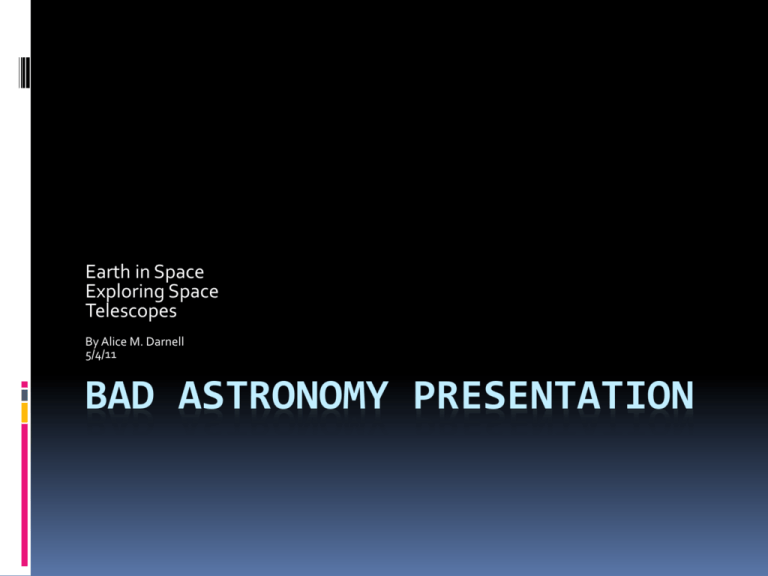
Earth in Space Exploring Space Telescopes By Alice M. Darnell 5/4/11 BAD ASTRONOMY PRESENTATION Earth in Space Misconception: Students may think that the changing distance between Earth and the sun causes seasons as Earth travels in its elliptical orbit. Relating to ISAT & ILS Goal 12: Earth in Space Address the Misconception Drawings of Earth’s elliptical orbit are often exaggerated. Students may misinterpret such drawings and think that as Earth comes closer to the sun, we have summer and, as Earth swings away from the sun, we have winter. What to do next…. Explain that Earth’s orbit is only slightly elliptical. The distance between Earth and the sun does not change enough to have a large effect on the seasons Show students simulated activities of the seasons and the yearly cycle of the seasons. What to do next… Point out the shape of Earth’s orbit. Explain that, although it is an ellipse, Earth’s orbit is almost a circle. In a simulation setting, ask: Why does the diagram in the assimilation show Earth’s orbit as an oval if it is really nearly circular? And, What causes the seasons? In Response to the Respective Questions… Earth’s orbit as an oval… The diagram is drawn as if you are looking at the ellipse from its side, similar to looking at a dinner plate on edge. If viewed fro above, the orbit would more closely resemble a circle. the seasons? What Thecauses tilt of Earth’ axis causes the seasons. Life Beyond Earth Misconception: Some students may think that extraterrestrial life must be limited to only intelligent life forms. Relating to ISAT & ILS Goal 12: Address the Misconception Students’ ideas about the features and history of Mars may be partly based on science-fiction stories, television shows, and movies. Have students prepare a FACT/FICTION sheet to distinguish scientific findings about Mars from science fiction. Address the Misconception… Have students share their FACT/FICTION sheet to discuss whether the agree on what is fact and what is fiction. Address the Misconception Some students may think that extraterrestrial life is limited only to intelligent life forms. Ask Students to give examples of various life forms on Earth. Stress that extraterrestrial life would include any organism living elsewhere in the universe. ASK STUDENTS: Why would scientists want to discover single-celled life on other planets? This would prove that life has arisen elsewhere. Telescopes Misconception: Some students may think that stars are only at nighttime. Relating to ISAT & ILS Goal 12: Address the Misconception Stars are always in the sky, even during the day. They are not visible however, because our eyes are not able to distinguish them because of the brightness of the sun. For this reason, optical telescopes cannot be used during daytime. Visible light form the sun, on the other hand, does not interfere with radio waves. Therefore, radio telescopes can be used both night and day. Address the Misconception Have students brainstorm other examples of how the sun’s brightness “overpowers” other forms of visible light. Possible Response: In the daytime, it can be hard to tell whether a car’s headlights are on. A flashlight’s beam cannot be seen in bright sunlight. (TEST THIS OUT). Sources Internet: http://www.ems.psu.edu/~fraser/BadScience. html Science Explorer: Astronomy , PearsonPrentice Hall Article: “Bad Science”
